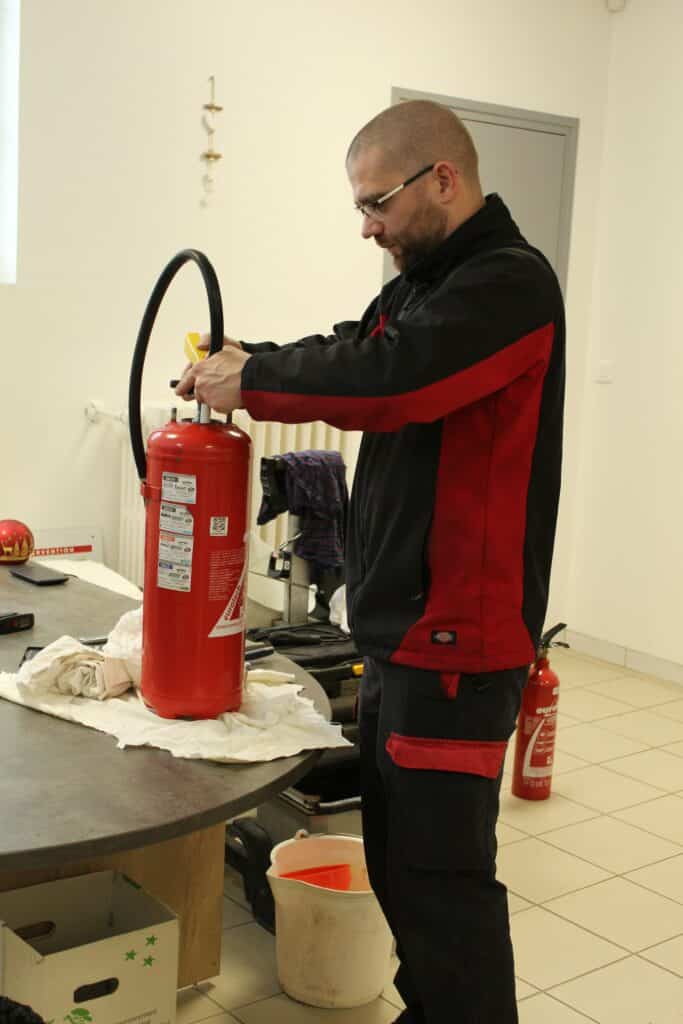How to check a powder extinguisher
Steps for Checking a Powder Extinguisher (Auxiliary Pressure) :
Visually check the condition of the device (impact, silk-screen printing, corrosion),
- Make sure there is no internal pressure by pressing the shut-off valve.
- Remove the head by unscrewing the nuts. Never expose your face directly above the head to be disassembled.
- Place a clean cloth over the extinguisher opening to prevent foreign objects from falling inside.
- Remove the gas cartridge and check its weight. Check that the gas charge complies with the various markings on the extinguisher body.
- Replace the gasket with a new one.
- Check pin safety system, firing pin and lance for proper operation.
firing pin, lance. - Check the condition of the dip tube and trimmer tube.
- Check by blowing that the hose and shut-off valve are not obstructed.
- Make sure the trigger is working properly.
- Replace all defective or missing parts with spare parts conforming to the certified model.
- Block the opening with a clean cloth, then loosen the powder by turning
by turning and shaking the extinguisher. If it is difficult to break down the powder, or if lumps are suspected, empty the extinguisher of its powder into a perfectly dry bucket, filtering it through a fine sieve. If lumps are found, replace the powder. After 5 years, the powder should be systematically replaced. - Use a powder that conforms to that with which the device has been certified. Under no circumstances should ABC powder be replaced by BC powder.
- Check powder charge: check against silk-screen print, taking tolerance into account.
- Reinstalling the safety system
- Refit the gas cartridge after lightly greasing the thread (do not grease parts in contact with powder). Recommended tightening torque is 8 N.m (-0./+1 N.m).
- Grease the studs, reassemble the device head, then gradually tighten the nuts to the correct torque.
- Replace the percussion indicator.
- Sealing the security system.
- Fill in the verification label.
- Record the verification in the safety logbook.

Read our other articles here! :


